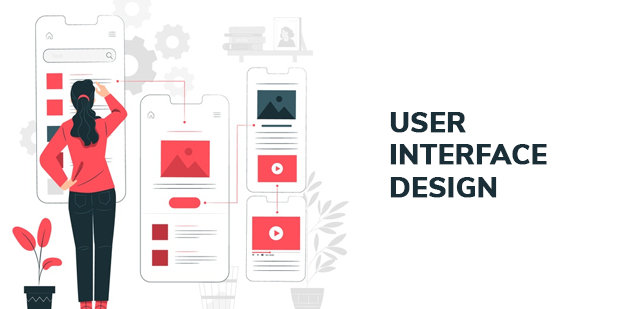User Interface Designing

Designing an effective User Interface:
User Interface (UI) Design essentially refers to anticipating end-user needs and goals and ensuring components of the interface are designed in a manner that makes them easy to grasp, access, and use by the end-user to attain their end objective. UI designing involves all the 3 elements of visual design, interaction design as well as information architecture.
User Interface design is based on 3 fundamental principles:
Below are some tips to keep in mind while UI designing :
- Start the process of designing keeping the user in mind. Focus on what the user wants or expects to create an interface that lets end users achieve their objective.
- An interface should first and foremost have clarity. Users should be able to clearly recognize what it stands for, its purpose and interaction with other elements on the site as well as the outcome of using the interface, to be able to motivate them to use the interface as ultimately interfaces are built to promote interaction.
- Ensure consistency in your interface design so that users are assured that once they learn to perform a particular action, they will be able to repeat the outcome with that action. A consistent interface helps users build an understanding of the product or application over time leading to increased efficiency with the same application which in turn drives them to use it more and more.
- Ensure the interface is designed in a manner that places control in the hands of the end-user. They should be able to predict with accuracy the outcome of an interface and what is expected at every step of the interface. Any unnotified changes and surprises take control away from the user making the interface less desirable and eventually less used.
- Design the interface in a manner that allows single one key action per screen as screens that permit more number of actions to end up becoming confusing and chaotic for the end-user. Each screen should be designed to support one key action that adds value to the end-user with one or more secondary actions which complement the main action.
- The test of a great user interface design is when it does not distract the user from the objective. A great interface design brings different elements together so seamlessly as to appear almost invisible from the rest and lets the user focus on the application and its use rather than any one particular element.
- One major reason why many interfaces end up being poorly designed is primarily due to the lack of a clear visual hierarchy. An interface should put the focus on what is the most critical element for the user to catch attention through the use of color, size, and placement of each element. A poorly designed visual hierarchy does not provide users with a clear signal as to which element they should be focusing on leading to confusion.
At the end of the day, an interface is designed in order to be used, and hence its success can be best measured when people choose to use it because they have liked it. If users have chosen not to use an interface, even if it is a beautifully designed interface worthy of winning awards, it is of no use and is eventually discarded for a more practical user interface. Interface design, therefore, has as much to do with creating an ecosystem for its use as it is about designing an interface worthy of use.



